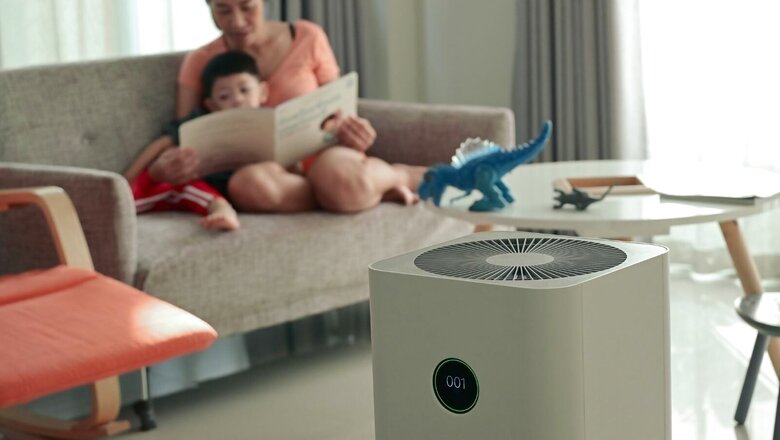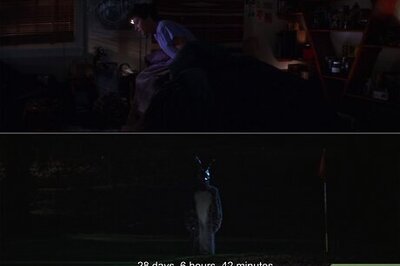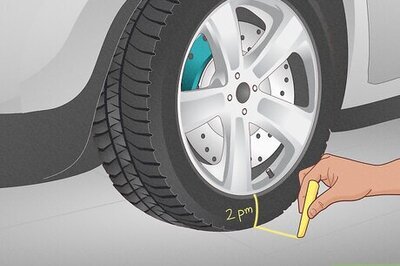
views
This has become an annual routine post-Diwali when people buy air purifiers as the city’s air quality starts worsening due to stubble burning and other contributors.
While many of us must have been monitoring the Air Quality Index (AQI) on phone or news channels closely for the last several weeks, to put things in perspective, here is what AQI signals.
AQI is based on the measurement of particulate matter (PM2.5 and PM10), ozone, nitrogen dioxide, sulphur dioxide and carbon monoxide emissions.
An AQI between 0 and 50 means good air quality, whereas 51 to 100 is moderate air quality. AQI between 101 and 200 is unhealthy, 201 to 300 is very unhealthy and 300 plus is hazardous.
You can blame the state of affairs as the AQI of North India — this year too — exceeded 600.
Doctors compare the impact of air pollution on public health to smoking at least 15-20 cigarettes a day, not only by adults but also by minors, children and infants.
They suggest that for healthy people, it is safe to step out up to AQI levels of 100-150 but for people who already suffer from respiratory diseases, it is safe to step out only when AQI hovers between 50 and 100.
As air quality deteriorates, the concentration of harmful PM2.5 increases. These are tiny particles in the air which reduce visibility, causing haze and smog.
They are concerning as they get embedded in our lungs and enter the bloodstream, causing multiple health-related issues such as decreased lung function, heart attacks and irregular heartbeat.
From fluctuating SpO2 — blood oxygen level — and cough and asthma to multiple lung disorders, people in northern India, especially the elderly, people with prior health issues and children, are rushing to hospitals. Air pollution is considered one of the known causes of lung cancer. The issue has been politicised more than finding a rational solution. There is little in our hands but besides reducing the outdoor activities of vulnerable people, one step we can take is purchasing a decent air purifier to keep our family safe, at least inside the home.
Air purifiers not only lower air pollution caused due to dust, pollen and smoke but the latest models sanitise a room’s air by absorbing toxic gases and odour and wiping out pathogens such as bacteria and viruses.
Buying an air purifier seems to be an important purchase decision but many of us are still unsure about it. The ‘One Size Fits All’ approach does not work with air purifiers as they need to be aligned with the size of your room and purification capacity.
So, I took a class from four pulmonologists — all representing top hospitals in northern India — to understand what you should consider before buying an air purifier. I will not suggest any brands here, but only the specification you should look for.
HEPA Filter
HEPA filters are pleated mechanical air filters to capture particulates. As air passes through the air filter, the particles are caught by different mechanisms.
HEPA is an acronym for High-Efficiency Particulate Air and it is considered the main line of defence in an air purifier and also the ‘gold standard’ for benchmarking.
The HEPA filter can theoretically remove at least 99.97 per cent dust, pollen, mould, bacteria, and any airborne particles with a size of 0.3 microns.
Many brands available online will only tell you that they are “true” HEPA filters, but experts suggest looking for the latest ones — H13 and H14.
The latest HEPA has an extremely dense tangle of fibres that can filter even the tiniest of particles — also known as Particulate Matter (PM) — when a strong motor pushes air through the mesh with a force.
While the H14 filter is the strongest and latest, H13 is also considered decent. There is no point in buying H12 if the latest filters are already available at competitive pricing starting upwards of Rs 9,000.
Clean Air Delivery Rate (CADR)
According to the United States Environmental Protection Agency (EPA) recommendations, all the air in a room should be processed five times per hour by an air purifier. However, in India, specifications on “air exchanges per hour” are usually not given by the manufacturers.
Here, CADR is mentioned which shows how quickly the machine is able to purify all air in the room. It is important to understand if the air purifier will work for your room as per the recommended size.
A good CADR rating is considered to be one which allows more than or equal to five exchanges per hour.
Here is a sample calculation: A room that measures 25 feet x 20 feet x 8 feet is 4,000 cubic feet. If the CADR (mentioned on the air purifier) is equal to 400 cubic feet metre (cfm), you can convert it into per hour. (400 * 60 minutes = 24000 cfh). Now, divide the CADR per hour by the room size to find air changes per hour (ACH).
For instance, in this example, it is 24,000/4,000 and the ACH is 6. It means the air purifier will be able to clean 100 per cent of the room’s air six times in one hour.
The higher the CADR rating, the larger the space an air purifier can clean or the more times per hour it can change the air. Hence, you can make a better purchasing decision.
Other important specifications
An air purifier should contain a washable pre-filter similar to what we have already seen in an air-conditioner. It is the first stage of filtration which captures large particles.
It also contains active carbon filters which remove odours and volatile organic compounds (VOCs) from the room.
It absorbs odour from paints, disinfectants, aerosol sprays, and cigarette and pet odours apart from many other household odours.
The two layers — washable pre-filter and active carbon filters — prolong the life of the HEPA filter and make the purifier more efficient.
You can also consider the noise levels of these machines as they do matter when purifiers are used during the silence of the night. But since many of us have enjoyed a good night’s sleep with high-decibel water coolers, the noise of air purifiers is not even half of the good old summer companions.
The replaceable HEPA filter and carbon filter should be changed as per the specifications and guidelines laid down by manufacturers. Also, the life of these filters may vary according to air quality, fan speed and indoor environment conditions. No matter how expensive your air purifier is, it won’t clean the air well if you don’t manage the filters properly. Therefore, do enquire about the cost and life of all its replacement filters before zeroing on a suitable purifier.
In short, don’t leave the crucial decision to marketing executives at offline stores or random best-selling lists on online sites.
Buying an air purifier is similar to buying a medical product for your loved ones. Spend your hard-earned money wisely.
Read all the Latest India News here



















Comments
0 comment